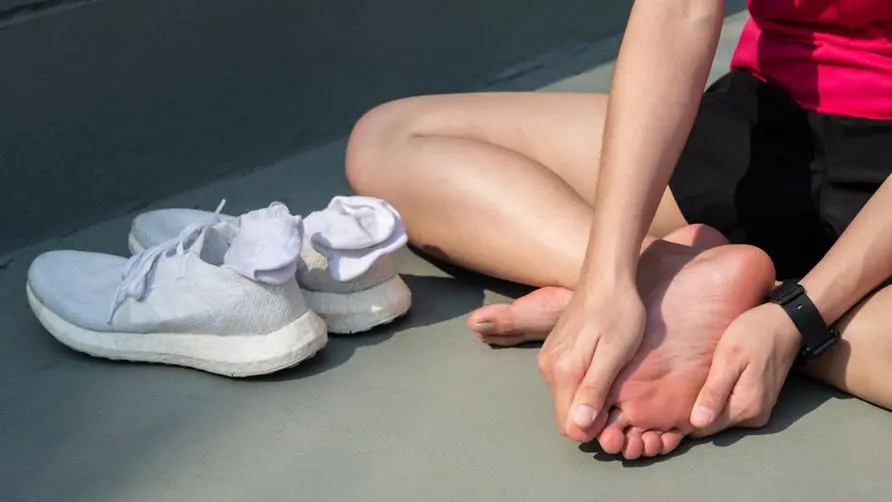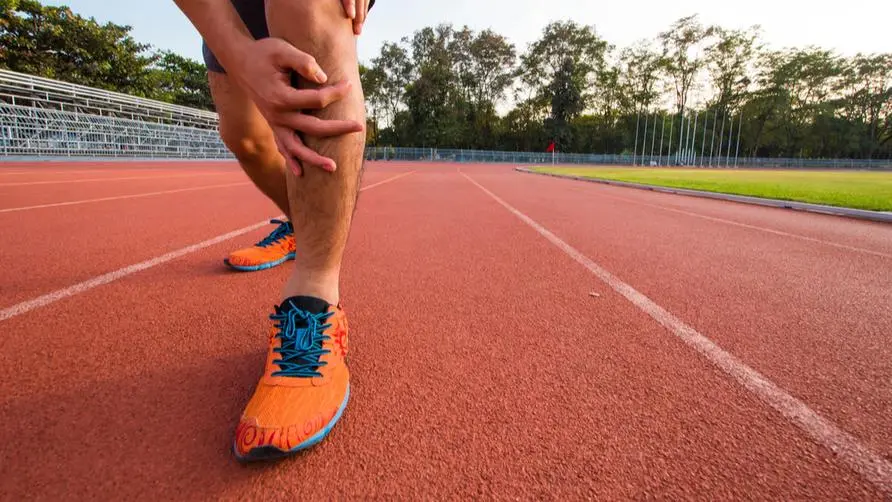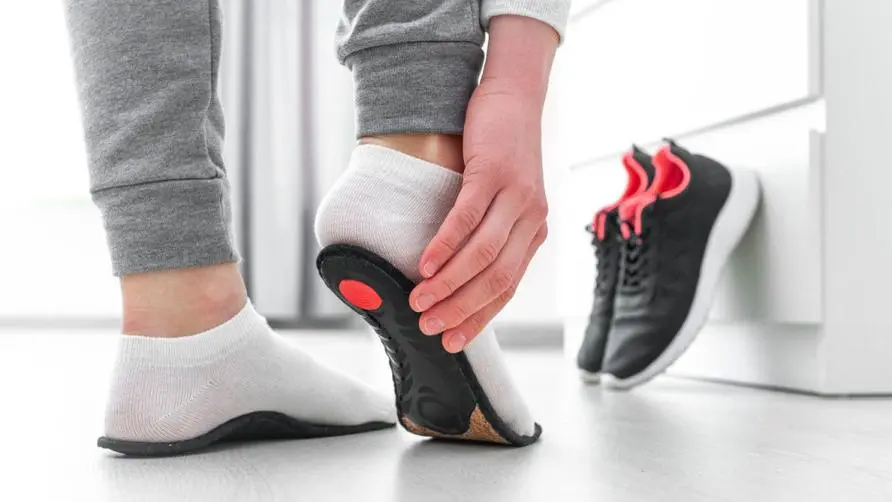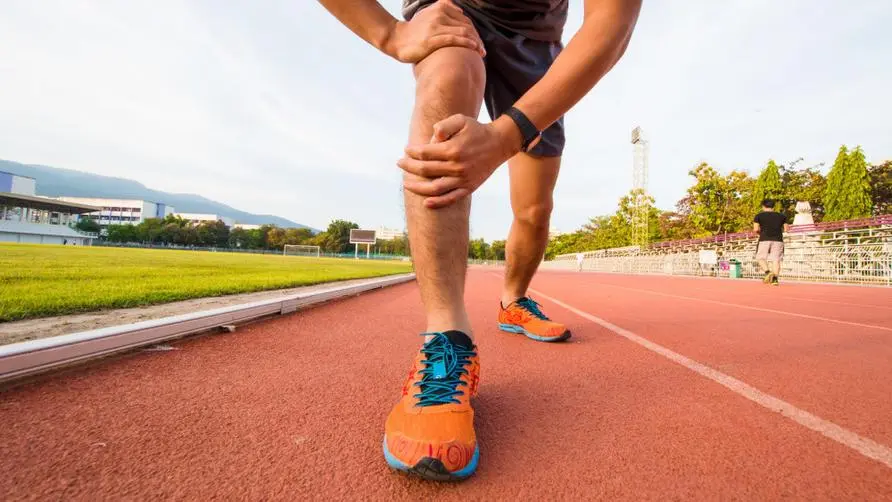Does running frequently lead to heel pain? Is plantar fasciitis related to weak core muscles? Medical Jie 1 exercise strengthens core stability

Does running often cause heel pain? Is plantar fasciitis related to weak core muscles?
Road running has become a popular trend among Taiwanese people in recent years, and many people worry that regular running may lead to plantar fasciitis. The plantar fascia generally refers to the fan-shaped connective tissue from the ball of the foot to the heel, extending from the heel to the five toes. The causes of plantar fasciitis are generally thought to be related to overuse, obesity, fat pad atrophy due to age, abnormal arches, and wearing inappropriate shoes. However, if analyzed from the movement of the human body structure, core deficiency may also be related to plantar fascia inflammation and pain.
Dr. Zhou Shiwei, Vice Chairman of the Taiwan Rehabilitation Medicine Association, pointed out in an interview with “healthorn” that from the perspective of the “kinetic chain”, the human body’s structures are interconnected. When running or walking, the force generated by the heel striking the ground will produce a reaction force. , and is transmitted upward from the heel to the knees, sacrococcygeal vertebrae, lumbar vertebrae, and even thoracic vertebrae and cervical vertebrae. In this process, the first core muscle group with the function of “absorbing shock” is the core of the human body’s pelvic floor muscles.
Dr. Zhou Shiwei said that in clinical practice, many patients with plantar fasciitis have suffered injuries such as falls or hip “bumps”, which have caused problems with the stability of the femoral and pelvic floor muscles. The pelvic floor muscles are important core muscles that affect the stability of the pelvis. Once the core strength is insufficient or injured, it may lead to poor stability of pelvic movements, which will also affect the knees, heels and plantar fascia.
Can’t we just rehabilitate but also do core training? How to avoid recurrence of plantar fasciitis?
Dr. Zhou Shiwei said that the prerequisite for treating plantar fasciitis is correct differential diagnosis. Through accurate diagnosis, theoretically various treatments including stretching, electrotherapy, sports rehabilitation and core training can have a positive effect on plantar fasciitis. benefit. In the acute inflammation phase or when pain symptoms are severe, injection treatment can be given first, but more importantly, appropriate core training can be added subsequently according to individual circumstances to achieve the two goals of accelerating recovery and reducing recurrence.
In addition, some patients need to cooperate with correct posture adjustments and lifestyle changes. For example, those who have had injuries to their hip muscles often have poor sitting and standing postures at the same time. Synchronous treatment is required to avoid repeated recurrences of plantar fasciitis. cycle.
Dr. Zhou Shiwei pointed out that the real “core” causes of many sports injuries can be found through movement analysis, such as the muscle groups used in tennis elbow, or the occurrence of plantar fasciitis, heel pain and core muscle groups. relation. Some patients will recommend practicing “Kegel exercises” to increase the strength of the pelvic floor muscles, improve shock absorption capacity and pelvic stability.
Is rolling a tennis ball or pulling a towel useful? Do you need to stretch your calves if you have plantar fasciitis?
When many people have plantar fascia inflammation, they “self-help” by rolling tennis balls on the soles of their feet, adding insoles, and stretching with towels. Dr. Zhou Shiwei explained that the principle of rolling tennis balls on the soles of the feet is similar to massage stimulation and helps blood circulation. The moderate thickening of the heel of the insole can supplement the lack of fat pad in the rear heel and improve cushioning. As for the forefoot against the towel and then stretching backwards with both hands, the purpose is to stretch the calf muscles and fascia. According to research, it is indeed helpful for plantar fasciitis. This also shows that plantar fascia pain is closely related to the calf muscles of the lower limbs and the pelvic floor muscles.
Dr. Zhou Shiwei said that if you like running and have plantar fasciitis, the correct treatment goal is to help you return to your original athletic ability, including distance and speed, and regain your normal running ability. For example, the running limit before the injury was 5 kilometers. After the injury, the foot hurts after running 1 kilometer. The treatment goal should be gradually increased from running 1 kilometer at the same speed to being able to run 5 kilometers without pain. Do not pursue quick recovery or insist on inappropriate training intensity to avoid secondary injuries. You can observe the recovery status in “weeks”. ,
Dr. Zhou Shiwei suggested that improving the treatment of plantar fasciitis depends on correct differential diagnosis. It is recommended to adopt a single professional opinion within the same period to avoid confusing the treatment effect. If there is no improvement for a period of time, you can seek a second opinion in a timely manner to find out other causes affecting the plantar fascia and take appropriate treatment.
Further reading:





